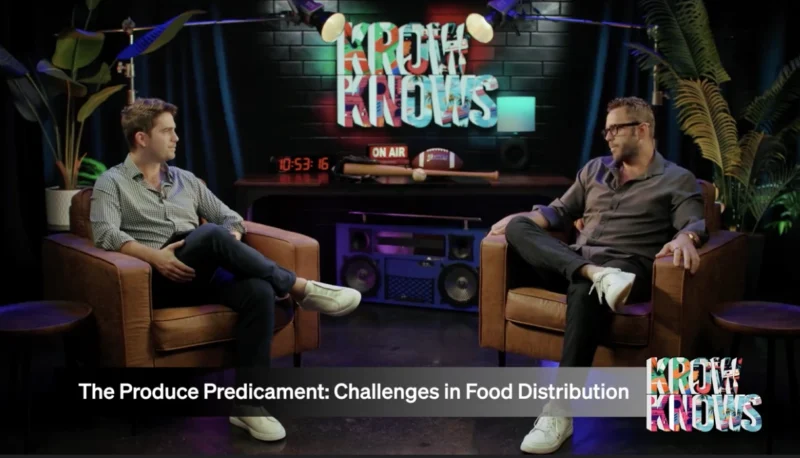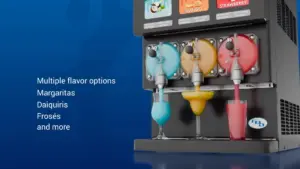The Food Industry’s Understaffing Problem: A Positive Change for Employees and Customers
The food industry is known for its fast-paced, high-stress environment. However, in recent times, the food industry’s understaffing problem has made things much more challenging! The food industry is feeling the pinch of understaffing, with over 60% of establishments admitting they are struggling to recruit enough employees. In spite of that, this challenge has resulted in positive change for employees and customers alike. With higher wages, bonuses, and better benefits packages, the industry has attracted younger workers who are seeking better opportunities. As Adela Smith, a long-time restaurant worker, notes, food service employees are realizing that there are other ways to earn a living that include health benefits, shorter hours, and a better work-life balance, and therefore can attract workers thus countering the food industry’s understaffing problem.
The trend towards better opportunities is a positive development that has been long overdue. Before COVID-19, it was difficult to find jobs that included a benefits package, but now even line cooks have access to such benefits. However, the industry is also facing high expectations from customers, who have little patience for understaffed establishments. According to a piece of data online customers mentioned short staffing three times more often in their Yelp reviews than in the year-ago period, according to the restaurant review site. This puts pressure on operators to hire enough staff and ensure that they are well trained.
Dimi Yar, Founder and CEO of Vosa Income Inequality Solutions, discusses the impact of the pandemic on the food service industry and its high turnover mentioning that the generational shift and inadequate compensation systems have led to the shortage of employees in the industry. His suggestion of an interesting proposal may work as a monumental breakthrough in the food industry’s understaffing problem.
Dimi’s Thoughts:
“My name is Dimi Yar, I’m the CEO and founder of VOSA Income Inequality Solutions. On the topic of the food industry, the restaurant industry, it’s always been an industry with high turnover. What happened over the last few years? The pandemic was also something that affected a lot of other industries, but it hit the food service industry probably the most.
So a lot of people were taken out of the workforce. A lot of people, because of the nature of the pandemic, decided that they would not want to be around clients around people. The other thing is more of a generational shift. The food service industry has never been a highly paid industry, and people generally worked on the tips and when you have a good restaurant, with a lot of traffic and clientele and good tipping in the US especially that was an attractive place to work for a lot of younger people during college, but also for people that just liked that kind of a job, like the interaction with the clients. The problem is that not only the traffic has decreased over the pandemic, but also the income itself is no longer sufficient to attract enough people to work there.
Yeah. So the system where you have a base pay a fairly low base pay and tips is really not sufficient in the end to entice people to remain in these restaurants in these diners for a long time. So the turnover is very high and the ability to attract people is largely dependent on compensation.
Yeah, there’s really nothing else outside of a family business with families that makes that much of a difference. So what some companies have tried to do is actually introduce different compensation plans. For example, there have been examples of restaurants that eliminated tips, increase their prices, and then share the revenues for the day among the employees.
There have been places that actually switch to more of a consistent profit-sharing approach. Now, this obviously requires some level of transparency and trust and openness with the owners of the business or the management of the business in order to be transparent about the revenue or the profit ultimately that comes in and in order to share it.
So there have been stories of restaurants that actually went that way and supposedly they had no trouble attracting or retaining employees. Now, we believe that profit sharing is an excellent idea. But it’s not enough just to share the profits with the employees. It is important how you do it.
And this is actually the most critical part. And the restaurants that I’ve heard about that did profit sharing, in general, they would share the profits more or less equally. Yeah. Or they would share profits one way with the frontline staff and another way with the staff in the kitchen.
What we propose and this is our flagship product, the Value of Service Award: we propose that the profit sharing should be aligned to the lengths of service at the company. So the longer employees stay with the company, the more of the profit they should get. Why is that important? That creates a motivational link and it creates a participation in the business success that is commonly lacking in the restaurant industry and everywhere else where employees basically worry about their own pockets and business owners have to worry about everything else. And this is also a problem with trying to raise minimum wages. Yeah, because the minimum wages is fixed cost, but the revenues are variable. So the risk of the squeezed profit margin stays with the owner, and it’s not necessarily fair because the owner is not the one earning the money, it’s the employees servicing the customers and preparing the food ultimately. So they’re the profit creators, they’re the value creators, and in the end it would make the most sense if that value that is created, which is profit, would be shared with the value creators according to their value to the business. And this is where we are saying that the value of the employee skills in the restaurant industry and in other industries is already assessed through the base compensation through the salaries.
The performance component is already addressed with the tips. The better you perform in your role as a waiter, the better experience you create for your customers, the more tips you make. So that is a performance component. There is a third component, and that is the component that has extreme level of value to the restaurants.
And that is specifically the value of the the character and the knowledge and the loyalty and the longevity of the employees. Why? From a customer perspective, I don’t go to the restaurant. Just to eat the food. Yeah. I go there for the ambience, but I also go there for the service. And the part of the ambience is the service and is the employees.
Yeah. And I would rather return or go more often to restaurants where I am made to feel comfortable. Yeah, where people are happy and I can see that the employees are happy and where there is a nice atmosphere, a nice vibe from that. And so if the employees change all the time, every day you have a new waiter who also doesn’t know the menu, who doesn’t know people, who doesn’t recognize you as a loyal customer, that is a problem for the restaurant.
That is where they are going to lose money and customers. So there is value in retaining the good people for longer, so they know everybody at the restaurant, they know people at the kitchen, they know the customers, they will recognize them, they will greet them, they will exchange the small talk or the big talk whatever, happens, but there is a human interaction and the relationship that is formed. So usually the best performing restaurants are the ones that are family owned, that have this culture, or they have a family sort of spirit to them where they treat their employees like family. And this should come with compensating employees also as family, assuming it’s not a disfunctional family.
So what it means is that if you create, if the restaurant is a family business, then the profit that it generates should be distributed fairly and what we suggest is keep the base salary, there should be something that people can get to and from work. Keep the tips, the performance component; it’s fine, it’s not a problem by itself. But we recommend adding a third component, which is profit sharing and you can allocate a reasonable amount of profit. And in fact, we can help calculate what a meaningful portion of profit would be. And then you allocate it to all your employees equally for each year of service.
And then cumulatively based on the number of years they have been with the company, this is basically your retention mechanism. And this is your motivation mechanism. And this is also something that will allow the employees to perceive that they’re being treated as humans. And that is an important element of perception of where the compensation is fair or not.”
Article written by Azam Saghir








